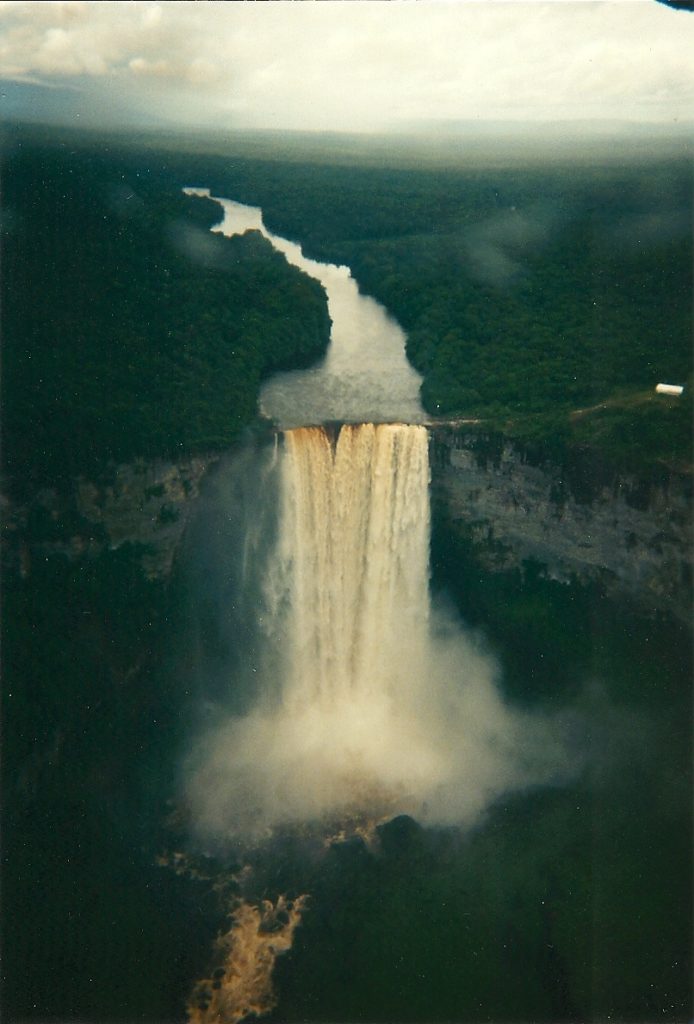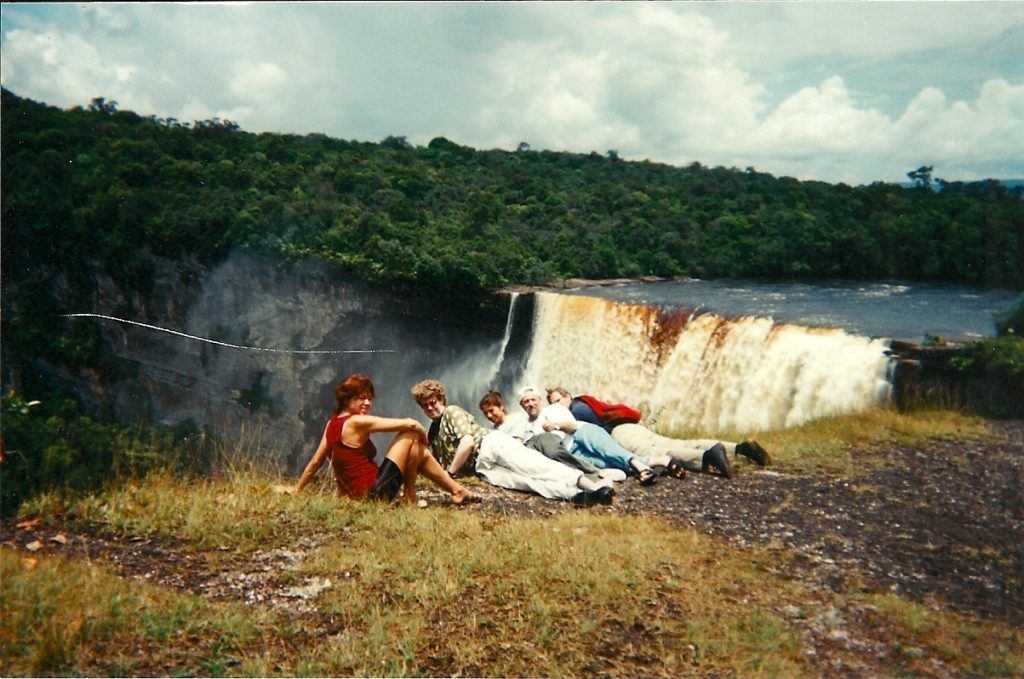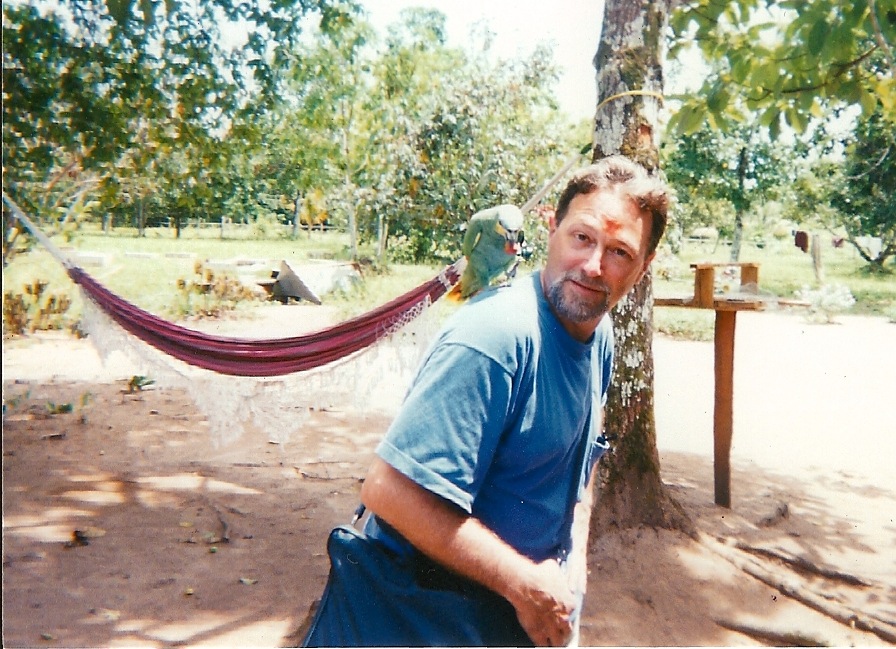I met this bush pilot in Guyana, the former British colony on the coast of South America. He flew five of us up to the falls at Kaietur, where the plateau extending from the Guiana Highlands breaks off, unleashing a plummet four times the height of Niagara, a third as wide.

This side-trip in a chartered Cessna 172 happened after the 1994 conference meeting of the Society for Pidgin and Creole Linguistics.
By Guyanese norms, our pilot was more black than Indian, he said, but he could deal with both, making the point with an expression in Creolese I couldn’t get, as if to show that none of us academic professionals of the matter could do much more than follow his drift, if that. He also told us that when he wasn’t doing the tourist thing he was doing with us, he would sometimes get gigs requiring him to fly all the way down to Chile along the front side of the Andes, hopping from one podunk airport to another until he got to a pass low enough to cross over to the Pacific side. There might have been some cocaine involved, I thought.
As we flew out of Georgetown up from the Caribbean coast, I watched him carefully, since I know a little about the mechanical protocols in a Cessna 172, this going back to flying lessons Dad gave me when I was sixteen. Flap adjustment by hand before landing sticks in my mind. It’s a very stable aircraft. Also a very forgiving one.
Another bush pilot I had flown with in Liberia told you had to be an idiot to die in one. He explained how you could even crash land by keeping your cool up to the very end so that you could steer into a copse between tree trunks. Stall speed is something like 35 mph. And the wings were designed, he claimed, to break off just at the point that the cockpit occupants would survive, as long as they were belted in and the pilot didn’t fly directly into any hard object, such as a tree trunk.
As mentioned, that flight up to Kaietur Falls was shared with a group of wacko creolists, in general a population noted for their eccentricity, though they are and must be fully functional human beings to survive in the difficult places they seek out for their research, mostly lost corners of what used to be called the Third World. In my experience, creolists are an open sort of folk, even when embroiled in arcane academic argumentation. One example is that once we got to Kaietur, there was talk, though just talk, about our all changing our flights out of Guyana for the next day and booking this guy for a trip along the Brazilian borders with Columbia, Peru, etc on down to wherever we might be able to cross over the Andes.

It wasn’t going to cost that much and would take just a few days there and back, less than a week. I was even calculating how I could get the money off my credit cards in lump sums to front the expense. No problem about visas, he said. This would be a private flight, and we’d work out the custom arrangements on the ground at each airport. Yeah, sure.
I regret that wisdom prevailed, as it too often does. These days the most I can manage is an occasional flight on Sativa Airlines.

